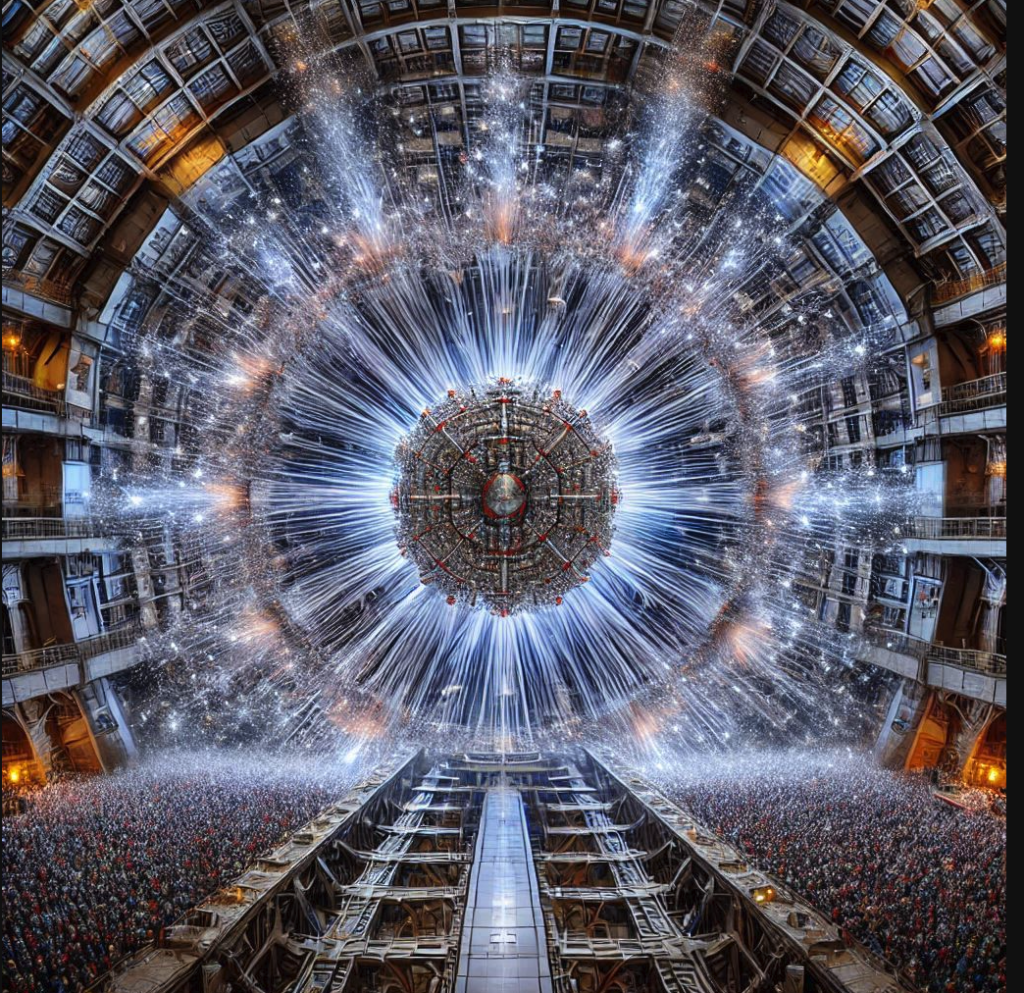Particle acceleration: new record reached at Lawrence Berkeley Laboratory
A team of researchers at Lawrence Berkeley National Laboratory has achieved a historic milestone in particle acceleration, pushing electrons to record energies in an incredibly small space. This achievement, achieved through an innovative dual-laser system and a new plasma channel generation technique, paves the way for future breakthrough applications in a variety of scientific fields.
The Berkeley Lab Laser Accelerator (BELLA) team, led by Alex Picksley, managed to bring electrons to an energy of 10 billion electron volts (10 GeV) in just 30 centimetres of space. To get an idea of the magnitude of this innovation, just think that current particle accelerators, such as CERN’s Large Hadron Collider, require kilometre-long structures to reach similar energies. The secret to this success lies in a sophisticated dual-laser system and a state-of-the-art technique for generating plasma channels. A first laser, called a “perforator,” creates a channel in the plasma, ionising the gas and generating an electron-free path. A second laser, called a “thruster,” accelerates the electrons injected into this channel, taking advantage of the plasma waves generated by the first laser. This technique, known as laser-plasma acceleration (LPA), allows for much higher acceleration gradients than traditional methods while drastically reducing the size of the accelerators.
What are FELs
FELs are a special type of laser that produces extremely bright, coherent light with a wide range of wavelengths, from infrared to X-rays. Unlike conventional lasers, which rely on electron transitions in atoms or molecules, FELs exploit the emission of radiation by free electrons moving at relativistic speeds in a wave magnetic field.
This characteristic gives FELs unique properties. High brilliance: the light produced is much more intense than that of conventional lasers, allowing matter to be studied with unprecedented resolution. Wide tunability: the wavelength of the light can be varied over a wide range, allowing different physical and chemical phenomena to be studied. Short pulse duration: FELs can generate ultrashort pulses of light, lasting as short as femtoseconds (millionths of a billionth of a second), allowing dynamic processes to be observed at the atomic and molecular levels.
Because of these properties, FELs are used in a wide range of applications. Materials science: studying the structure and properties of materials at the atomic and molecular levels, developing new materials with specific properties. Structural biology: determine the three-dimensional structure of proteins and other biomolecules and understand the molecular mechanisms underlying biological functions. Medicine: develop new imaging and therapy techniques, such as cancer radiotherapy with high-energy electron beams. Chemistry: study chemical reactions in real-time and control chemical reactions with light. Physics: study fundamental interactions between light and matter and explore new physical phenomena.
The impact of laser-plasma acceleration on FELs

As you anticipated, laser-plasma acceleration (LPA) could revolutionise the development of FELs. Current FELs are based on conventional particle accelerators, which are large, expensive, and complex. On the other hand, LPA allows much higher accelerations to be achieved in smaller spaces, paving the way for more compact, efficient and affordable FELs. This could significantly impact scientific research, making FELs available to more laboratories and research centres and enabling new applications in different fields. FELs are powerful and versatile tools with enormous scientific and technological research potential. Laser-plasma acceleration could play a key role in making FELs more accessible and widespread, opening new frontiers in knowledge and innovation.
Goodbye capillaries, welcome to gas jets
Another important innovation introduced by the BELLA team concerns the abandonment of traditional fixed-length capillaries for plasma generation. In their place, the researchers used a supersonic gas jet system, which allows much more precise control of plasma parameters. “The jets create a layer of gas travelling at supersonic speed, through which lasers pass to form the plasma channel,” the researchers explain. This configuration offers several advantages, including greater stability of the plasma channel and the ability to vary the gas density dynamically. The potential applications of this technology are many and impactful. More compact and efficient free-electron lasers (FELs): FELs are extremely powerful and versatile light sources used in various fields, from materials research to structural biology.
Laser-plasma acceleration could lead to the development of more compact and affordable FELs, opening new possibilities for scientific research. Advanced medical therapy: High-energy electron beams produced by laser-plasma accelerators could be used for cancer radiotherapy, offering greater precision and reducing side effects on healthy tissues. High-energy physics studies: Laser-plasma acceleration could allow even higher energies to be achieved in smaller spaces, opening new frontiers in elementary particle physics. The achievement of the BELLA team represents a giant step in the field of particle acceleration. This technology, still under development, has the potential to revolutionize several scientific and technological fields, opening new avenues for research and innovation.



